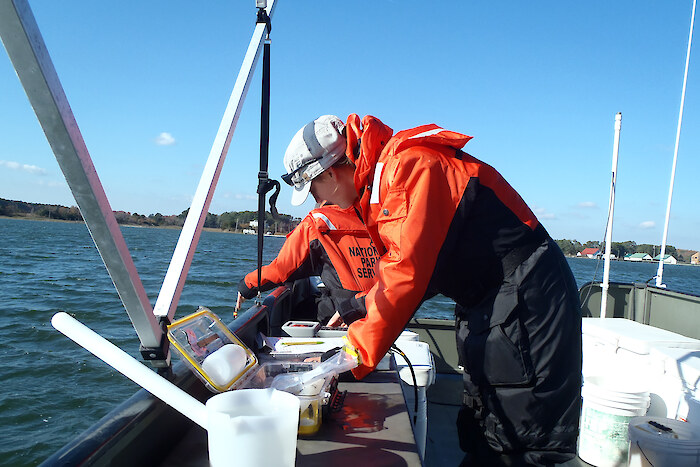
Chlorophyll a is the green pigment in tiny marine algae (phytoplankton) that produces food. Measuring chlorophyll is based on the amount of phytoplankton (microalgae), which use both nitrogen and phosphorus to grow. Too much algae in the water reduces water clarity, and decomposing algae leads to reduced dissolved oxygen. In a balanced ecosystem, phytoplankton provide food for fish, crabs, oysters, and worms. When too many nutrients are available, phytoplankton may grow out of control and form algal blooms that can harm fish, shellfish, mammals, birds, and even people.
How is it measured?
Chlorophyll a concentrations were measured at 74 stations bi-monthly to monthly over the calendar year. Data from each sampling station was used to calculate a median concentration and an attainment score was subsequently derived using multiple health-based thresholds. Chlorophyll scores for each sampling station were then averaged by reporting region.
Threshold levels
| Threshold (µg L-1) | Score |
|---|---|
| <7.5 | 100 |
| 7.5–<15 | 80 |
| 15–<30 | 60 |
| 30–<50 | 40 |
| 50–<75 | 20 |
| ≥75 | 0 |
